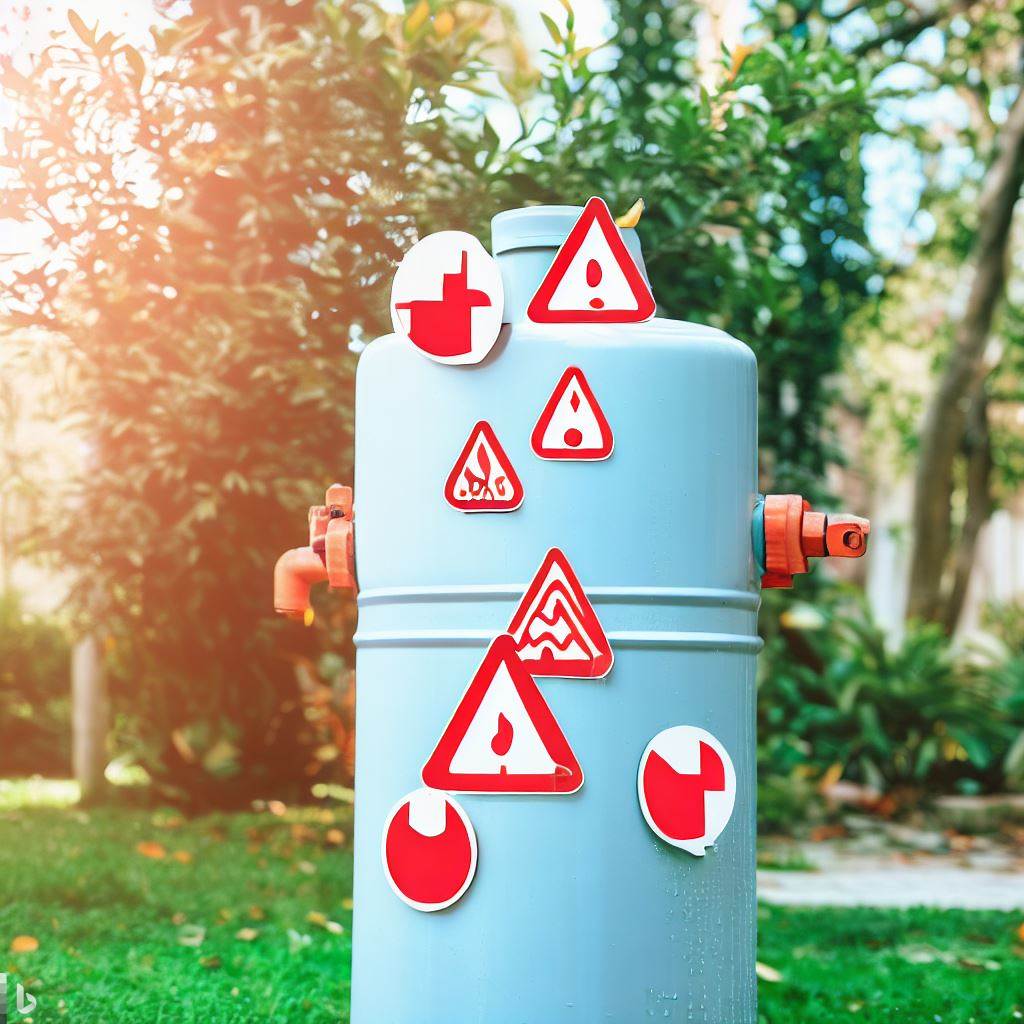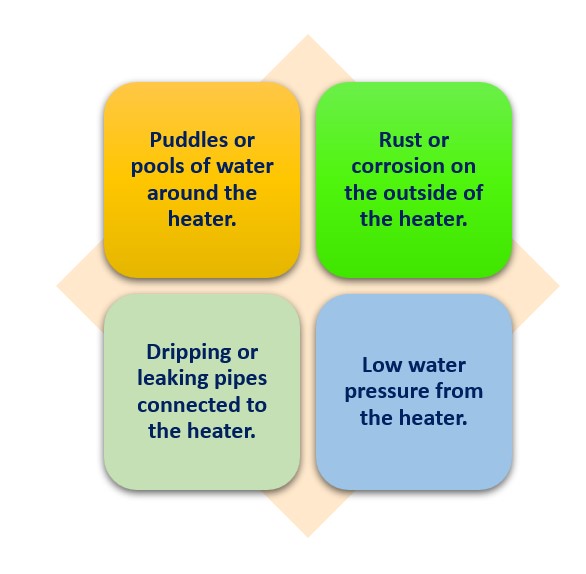Table of Contents
Water heaters are a must-have for all our hot water needs. But, when they suffer problems like leaking from top and bottom, it’s a huge inconvenience and could lead to water damage. Let’s take a look at why water heaters leak, their possible causes and how to fix the issue.
Key Takeaways
- A water heater leaking from both the top and bottom is a serious issue that should be addressed immediately.
- Leaks from the top of the water heater can be caused by a faulty temperature and pressure relief valve, a loose connection, or a cracked tank.
- Leaks from the bottom of the water heater can be caused by a faulty drain valve, a cracked tank, or excessive pressure inside the tank.
- It is important to turn off the power supply and shut off the water to the water heater before attempting any repairs.
- If the temperature and pressure relief valve is causing the leak, it may need to be replaced by a professional plumber.
- If the tank is cracked, it is usually not repairable and the entire water heater may need to be replaced.
- Regular maintenance and inspection of the water heater can help prevent leaks and extend its lifespan.
- It is recommended to consult a professional plumber to accurately diagnose and fix the issue to ensure safety and prevent further damage.
Leaks from the top can usually mean the temperature pressure relief (TPR) valve or its parts are faulty. This valve is designed to release excess pressure from the tank. When it malfunctions, it results in leaking. Loose pipes or corrosion inside the tank are other potential causes.
Leaks from the bottom might be more serious. They could mean a cracked tank, issues with the drain valve or pipe fittings. Corrosion or sediment buildup inside the tank can also weaken it, resulting in leaks.
Regular maintenance is key when it comes to water heater leakage and extending its life. Flush the tank to get rid of sediment and inspect pipes for any loose connections.
Signs of a Leaking Water Heater

A leaking water heater can be very costly and lead to water damage. Here’s what to look for:
- Puddles or pools of water around the heater.
- Rust or corrosion on the outside of the heater.
- Dripping or leaking pipes connected to the heater.
- Low water pressure from the heater.

It’s important to take action quickly if you think your water heater is leaking. Contact a professional plumber who can identify and fix the issue.
Regular maintenance is also key. Flush out sediment, check the pressure relief valve, and inspect the anode rod. These steps can help prevent leaks.
Be aware of the signs of leakage. This is how to keep your water heating system safe and functional.
Causes of a Leaking Water Heater
A leaking water heater can be a serious issue, potentially leading to pricey repairs and water damage. To prevent further problems, it is important to identify the cause of the leak.
- Corrosion: Corrosive materials or simply wear and tear may cause the internal tank to deteriorate, leading to small cracks or holes. This will result in leakage.
- Pressure build-up: High incoming water pressure or malfunctioning pressure relief valve can cause pressure within the tank to exceed its capacity. This can lead to leaks from pipe connections or relief valves.
- Loose pipe fittings: Vibrations from normal use can cause the fittings between pipes and the water heater to become loose. This, in turn, causes water leakage.
Sediment build-up and age can also contribute to leaking water heaters. So, regular maintenance steps such as draining the tank and checking for signs of leaks are imperative.
Don’t wait until it’s too late! Ignoring a problem can result in further damage not only to your unit but also your home.
Call a professional plumber who can assess the situation and provide appropriate solutions. By taking proactive measures for regular maintenance, you can ensure your water heater’s efficiency and longevity – ultimately saving time, money, and frustration.
Safety Precautions
When dealing with a leaking water heater, safety must be top priority! Here are some important steps:
- Turn off power and gas supply. This will help prevent accidents or further damage.
- Shut off the cold water supply. This will avoid extra water leakage.
- Open the temperature and pressure relief valve (TPR valve). This will release excess pressure and prevent explosions.
- Connect a hose to the drain valve and open it. This will reduce water damage.
- Call a professional plumber. They have the expertise to safely diagnose and repair any issues.
Regular maintenance can also help prevent future leaks and lengthen the water heater’s life. Check for corrosion, flush out sediment buildup, and inspect pipe connections.
Steps to Fix a Leaking Water Heater
Leaking water heaters can be a major problem. To fix it, here are a few steps to take:
- Find the source: See if the leak is coming from the top or bottom of the heater.
- Cut the power: Turn off the electricity or gas before starting repairs.
- Drain the tank: Connect a hose to the drain valve and empty it out.
- Check and replace faulty parts: Examine valves, pipes, and connections for any issues. Replace them if needed.
- Tighten loose connections: Securely fasten any loose fittings with a wrench.
Plus, check for corrosion inside the tank which can cause leaks. TPR valves often fail and can cause excessive pressure.
If your water heater is leaking:
- Turn off power – switch off circuit breaker for electric, gas supply for gas.
- Shut off water supply – locate and close cold-water shutoff valve.
- Drain the tank – attach hose to drain valve and open.
- Call a pro – get professional assessment and repair.
The US Department of Energy warns that water heater leaks can cause major water and structural damage, plus costly repairs or replacements. So, taking care of your water heater is essential to avoid expensive repairs.
Prevention and Regular Maintenance Tips
- Check regularly for leaks. Look for puddles or moisture, and check the surface for dampness. If you spot a leak, fix it quickly.
- Flush the tank yearly to get rid of sediment. Connect a hose to the drain valve and let the water flow until it’s clear.
- Test the pressure relief valve now and then. Lift the lever partially and see if water comes out of the overflow pipe. If not, or if it keeps leaking, replace it.
- Insulate pipes connected to your water heater. Use pipe insulation or foam sleeves for this.
- Check the temperature setting – it should be between 49-60 degrees Celsius (120-140 degrees Fahrenheit).
- Inspect pipe connections for leaks and loose fittings. Tighten them if possible, or call a plumber.
By following these tips, you’ll keep your water heater in good condition. Be proactive – it’ll save you costly repairs and give you hot water!
When to Call a Professional Plumber?
Calling a pro plumber for water heater issues is a must when you have complex problems or lack the skills to fix them. Leaks from both top and bottom of your water heater can be signs of serious issues. These can appear as puddles on the floor or dripping from the unit. Don’t ignore them – they can lead to water damage and costly repairs.
Evaluate the cause of a leaking water heater. Leaks at top could mean pressure-related problems like a faulty TPR valve or excess pressure due to a closed valve on the cold water supply line. Bottom leakage might come from a crack in the tank or loose pipe connections. Identifying the root cause will help decide if you need professional help.
You can try simple troubleshooting steps before calling a plumber. For example, turn off power and gas supply to the hot water heater to prevent more damage, and drain excess water using a drain valve before replacing parts.
Frequently Asked Questions
What does a leaking water heater look like?
A leaking water heater may have visible signs such as puddles or wet spots on the floor around the unit. You may also notice water dripping or spraying from the top or bottom of the tank.
Why is my water heater leaking on top?
A water heater may leak from the top due to a faulty TPR (temperature pressure relief) valve, which is a safety feature that releases excess pressure inside the tank. It can also be caused by loose pipe connections or a crack in the tank.
Can a water heater leak from the top and bottom?
Yes, a water heater can leak from both the top and bottom. Leaks from the top are usually related to pressure issues or valve problems, while leaks from the bottom are often due to tank corrosion or a faulty drain valve.
What are the common causes of water heater leaks?
Some common causes of water heater leaks include high water pressure, corrosion inside the tank, a faulty TPR valve, loose pipe connections, or a damaged drain valve. Regular maintenance and proper care can help prevent these issues.
How can I stop a water heater from leaking?
If your water heater is leaking, it is recommended to turn off the power supply and shut off the water heater’s cold water supply valve. Contacting a professional plumber is the best solution to inspect and repair the specific issue.
Is it necessary to replace a leaking water heater?
In some cases, repairing a leaking water heater may be possible. However, if the tank is severely corroded or there are multiple leaks, replacing the water heater may be the most cost-effective and safe solution in the long run.
Conclusion
Leaks from water heaters: be quick to address it. Reason? Faulty valve, high pressure, sediment buildup – could be any.
References :
